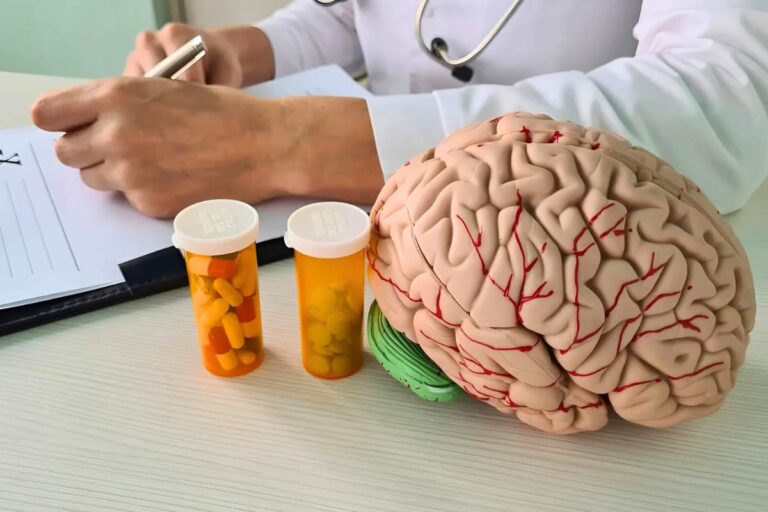Have you ever wondered why men and women may respond differently to stress, drugs, or even mood disorders? The explanation could be hiding in the brain’s chemistry, specifically in the way histamine changes dopamine in different ways in male and female brains. Though both chemicals play essential roles in brain operation, their interaction seems to be particularly determined by biological sex. The unexpected disparity may go a long way toward explaining gender differences in mental illness, behavior, and even addiction.
In this article, we’ll explore how histamine and dopamine work, why their interaction matters, and what science reveals about the sex-based differences that could reshape our understanding of brain health.
What Is Histamine and What Does It Do in the Brain?
Most of us connect histamine with allergies, and rightly so. It’s a chemical that plays a central part in the immune system. But histamine does far more than make us sneeze and tear up. Within the brain, it serves as a neurotransmitter, a chemical messenger that facilitates nerve cells to talk to each other
Major Roles of Histamine within the Brain:
- Controlling sleep and wakefulness
- Regulating appetite and energy homeostasis
- Affecting learning and memory
- Regulating emotions and mood
Histamine is synthesized in the hypothalamus and diffused through various routes in the brain, where it acts with other neurotransmitters, including dopamine.
What Is Dopamine and Why Is It Important?
Dopamine has also been nicknamed the “feel-good” neurotransmitter. Dopamine is central to reward, motivation, pleasure, and movement. It’s associated with Parkinson’s disease, depression, and ADHD when it’s low, but too much or dysregulated dopamine is also involved in addiction and schizophrenia.
The role of dopamine isn’t one-size-fits-all; it’s where it acts within the brain and what else is nearby, such as histamine.
Histamine Alters Dopamine: A Subtle Dance
And here’s where it gets fascinating. Histamine and dopamine don’t operate alone, they engage in a delicate dance of interaction. Histamine changes dopamine by regulating its release, reuptake, and receptor sensitivity. This interaction influences the way dopamine signals are received and interpreted.
Recent studies have revealed that this interaction operates differently in male and female brains, introducing yet another layer of complexity.
How Histamine Affects Dopamine Differently in Male and Female Brains
Sex hormones such as estrogen and testosterone shape the brain’s chemistry, including neurotransmitters. Research indicates that estrogen strengthens dopamine signals, but testosterone has more inconsistent results. This hormonal context can modify the effects of histamine on dopamine in men compared to women.
Scientific Findings:
A 2023 Nature Neuroscience study discovered that histamine regulates dopamine release in a sex-specific way in the striatum, a brain area associated with reward and motor control. Here’s what the research revealed
- In male mice, heightened histamine activity resulted in decreased dopamine release in the striatum.
- In female mice, the same increase in histamine increased dopamine release.
These variations were associated with the expression of sex hormones and histamine receptors, most notably estrogen, which appears to affect receptor sensitivity.
Why Does This Matter?
It’s not only an interesting scientific tidbit, but it has practical implications.
1. Mental Health Treatments
Depression, anxiety, and schizophrenia tend to present similar prevalence and symptoms in the sexes. Women tend to be more likely to develop depression, and men are more likely to abuse substances. This could be explained partially by the way their brains respond to dopamine differently.
If histamine is involved in that processing, then modulating the histamine system may unlock the potential for personalized medications, taking into account biological sex.
2. Medication Response
Certain psychiatric drugs, particularly those that act on dopamine, can perform better or worse in a patient based on sex. For example, antipsychotics tend to have varied side effect profiles in women and men, perhaps because histamine’s balancing effect is involved.
3. Sleep and Alertness
Sleep and AlertnessHistamine plays a similar role in controlling wakefulness. Sleep disorders, which tend to vary by gender, could be connected to the interaction between histamine and dopamine systems.
Hormonal Influence: The Estrogen Factor
Estrogen seems to be a critical regulator of how histamine impacts dopamine in women. It may enhance dopamine synthesis, release, and receptor density. This might be one reason why females are more sensitive to drugs such as amphetamines and are likely to have increased drug reward responses.
Estrogen also influences the histamine receptors, especially H1 and H3 receptors, which exert opposite functions in modulating dopamine.
Histamine Receptors and Their Role
There are four principal histamine receptors in the brain: H1, H2, H3, and H4. Each serves a distinct purpose:
- H1 receptors: Regulate arousal and hunger.
- H2 receptors: Less understood in the brain, more active in the stomach.
- H3 receptors: Function as autoreceptors, regulating the release of histamine and other neurotransmitters, such as dopamine.
- H4 receptors: Primarily regulate immune response.
In males, activity at the H3 receptor is reportedly more effective in suppressing dopamine compared to females. This might be responsible for differences in sex for the regulation of dopamine when histamine is high.
Real-World Examples and Case Studies
Let’s parse this out with a couple of sample scenarios:
Example 1: ADHD in Boys vs. Girls
Boys are more likely to be diagnosed with ADHD, which is associated with dopamine dysfunction. If histamine suppresses dopamine more intensely in men, this may be the cause of lessened attention and concentration
Example 2: Depression in Women
Women also have higher incidences of depression, which might be attributed to excessive dopamine breakdown or varying estrogen levels. If histamine heightens dopamine in women, it could provide a protective mechanism or render some women more susceptible to mood fluctuations depending on hormone cycles.
Can This Be Used in Future Treatments?
Yes. Here’s how:
Possible Future Applications:
- Sex-specific medications acting on histamine receptors
- Hormone-based treatments for dopamine disorders
- Diagnostic tools utilizing histamine-dopamine profiles
This could usher in a new era of customized therapy, where medications for mental disorders, dependency, and even insomnia are designed according to sex and brain chemistry.
What’s Next in Research?
Scientists have only just begun to reveal the sheer complexity of neurotransmitter interactions. Areas ripe for future investigation include
- How menstrual cycles affect histamine-dopamine dynamics
- The influence of testosterone on male brain sensitivity to histamine
- How antihistamines (ordinary allergy medication) may quietly impact brain function differently in men and women
Summary: A New Frontier in Brain Science
The discovery that histamine changes dopamine in male and female brains in distinct ways is more than an interesting scientific anomaly; it’s a vital window into the biological foundation of mental health and behavior. These findings undermine the one-size-fits-all model of brain science and reveal thrilling potential for more individualized healthcare.
As we learn more about the brain’s chemical tongue, one fact is certain: sex differences matter, not merely in anatomy but deep in the wiring that governs our thoughts, feelings, and behaviors.






















